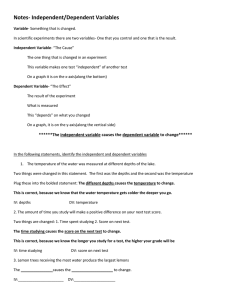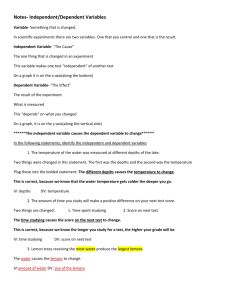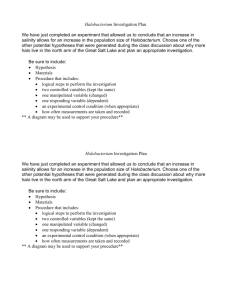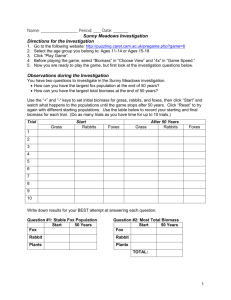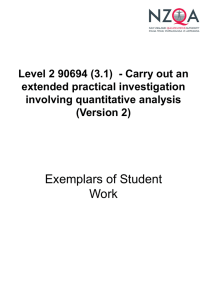File - Ms. Petrauskas` Class
advertisement
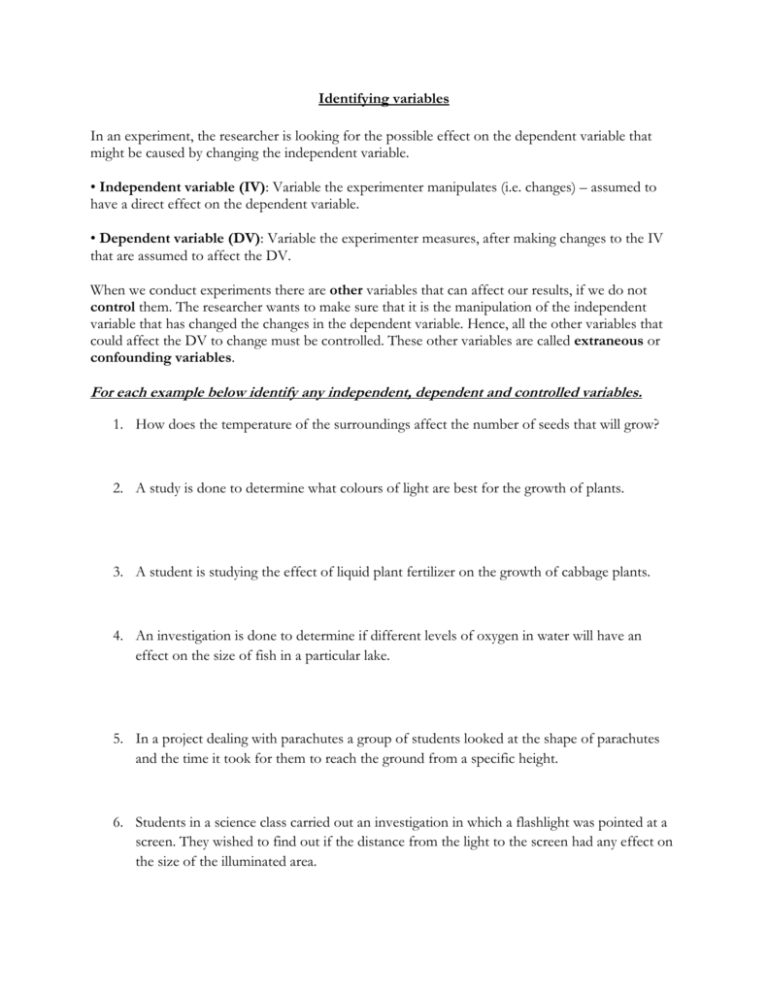
Identifying variables In an experiment, the researcher is looking for the possible effect on the dependent variable that might be caused by changing the independent variable. • Independent variable (IV): Variable the experimenter manipulates (i.e. changes) – assumed to have a direct effect on the dependent variable. • Dependent variable (DV): Variable the experimenter measures, after making changes to the IV that are assumed to affect the DV. When we conduct experiments there are other variables that can affect our results, if we do not control them. The researcher wants to make sure that it is the manipulation of the independent variable that has changed the changes in the dependent variable. Hence, all the other variables that could affect the DV to change must be controlled. These other variables are called extraneous or confounding variables. For each example below identify any independent, dependent and controlled variables. 1. How does the temperature of the surroundings affect the number of seeds that will grow? 2. A study is done to determine what colours of light are best for the growth of plants. 3. A student is studying the effect of liquid plant fertilizer on the growth of cabbage plants. 4. An investigation is done to determine if different levels of oxygen in water will have an effect on the size of fish in a particular lake. 5. In a project dealing with parachutes a group of students looked at the shape of parachutes and the time it took for them to reach the ground from a specific height. 6. Students in a science class carried out an investigation in which a flashlight was pointed at a screen. They wished to find out if the distance from the light to the screen had any effect on the size of the illuminated area. 7. The number of pigs in a litter is determined by the weight of the mother pig. 8. The state agricultural department has been counting the number of foxes in Brown County. Will the number of foxes have any effect on the rabbit population? 9. The score on the final test depends on the number of subordinate skills attained. 10. A study was done with white rats to see if the number of offspring born dead was affected by the number of minutes of exposure to x-ray by the mother rats. 11. The time it takes to run a kilometer depends on the amount of exercise a person gets. 12. The higher the temperature of water, the faster the egg will cook. 13. An investigation was done to see if keeping the lights on for different amounts of time each day affected the number of eggs chickens laid. 14. The temperature of the water was measured at different depths of a lake. 15. Grass will grow taller if it is water more and fertilized. 16. If the amount of calcium chloride added to water increases, the temperature of water increases. 17. The amount of pollution produced by cars was measured for cars using gasoline containing different amounts of lead. 18. The amount of algae growth in a lake seems to be directly related to the number of sacks of phosphate fertilizer sold by local merchants. 19. An investigation was performed to see if corn seeds would sprout at different times depending on the temperature of water in which they were placed. 20. Five groups of rats were fed identical diets except for the amount of vitamin A that they received. Each group was then weighed after three weeks to see if different amounts of vitamin A affected their weight. 21. An experiment was done to see if children’s scores in weekly spelling tests were affected by the number of minutes of spelling lessons they received each day. 22. Will the number of paperclips picked up by an electromagnet be increased, if more batteries are put into the circuit.

